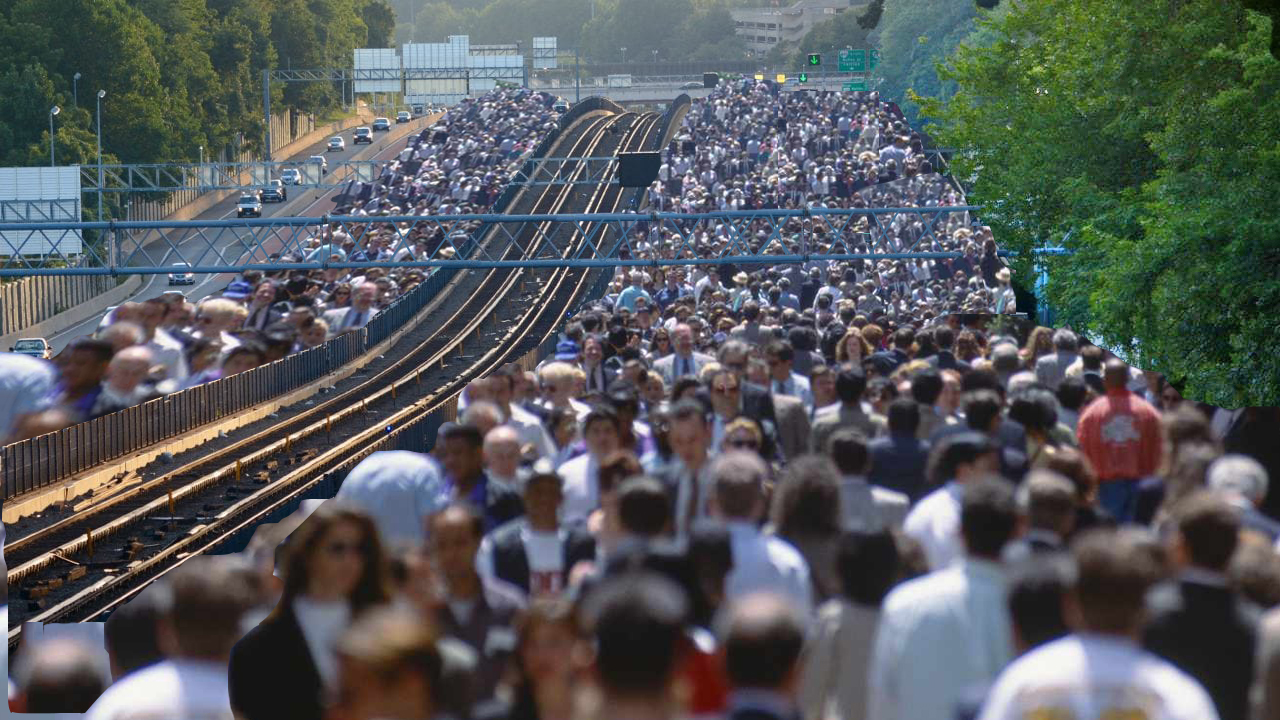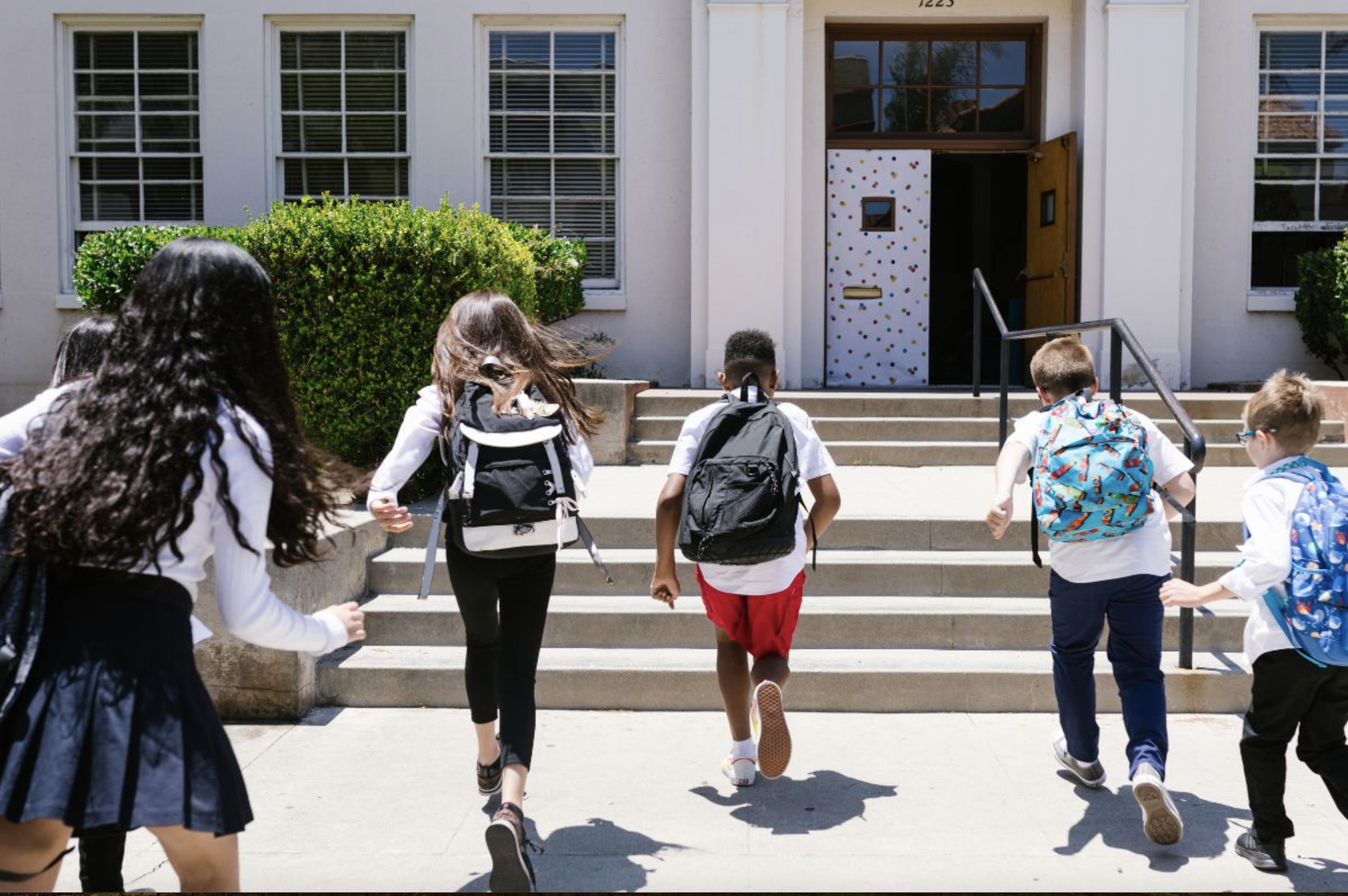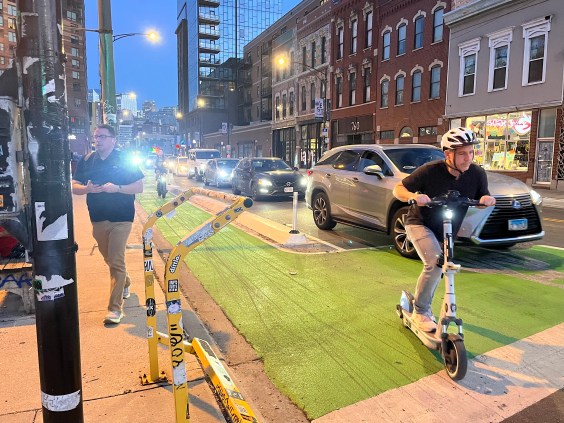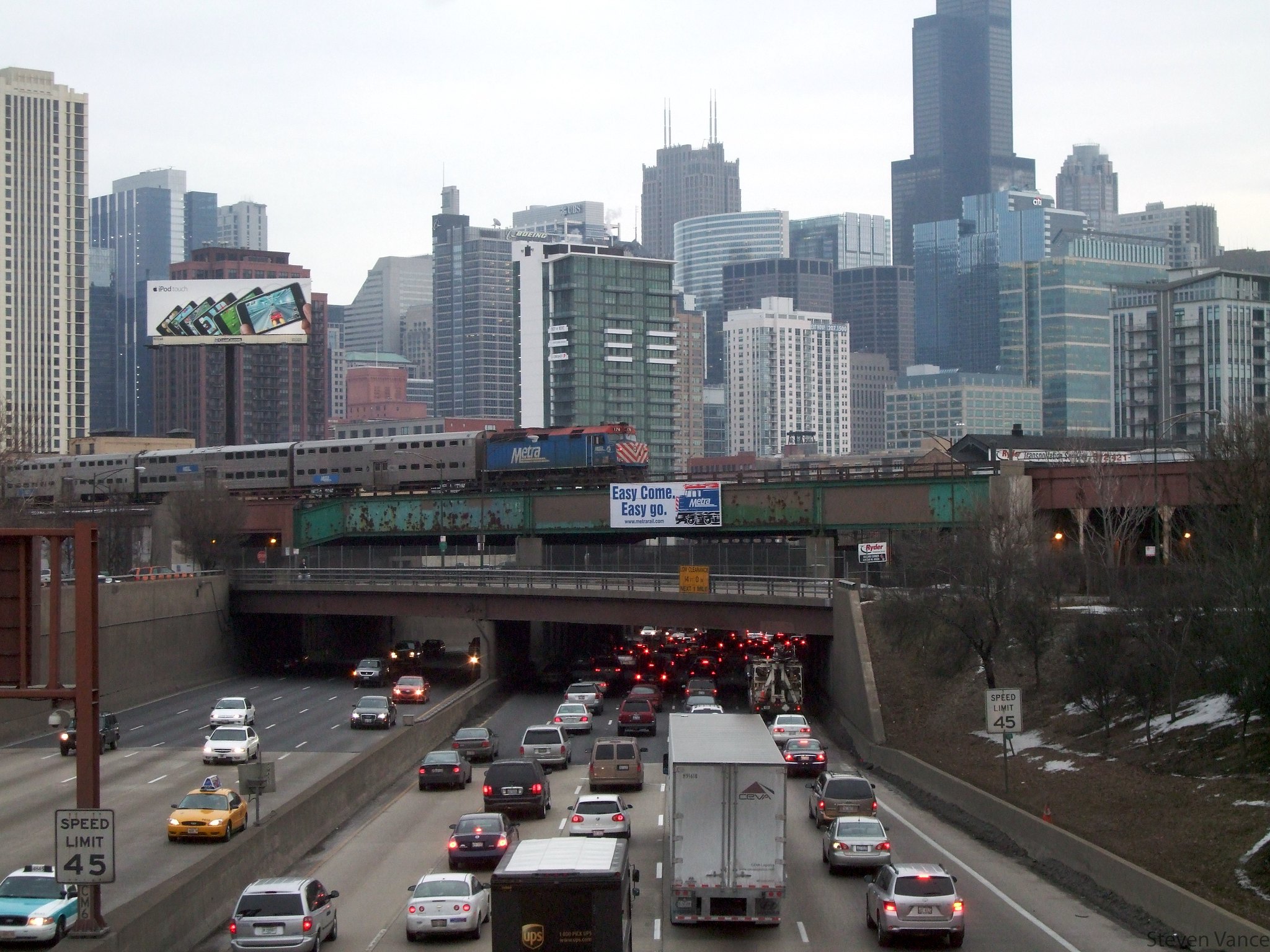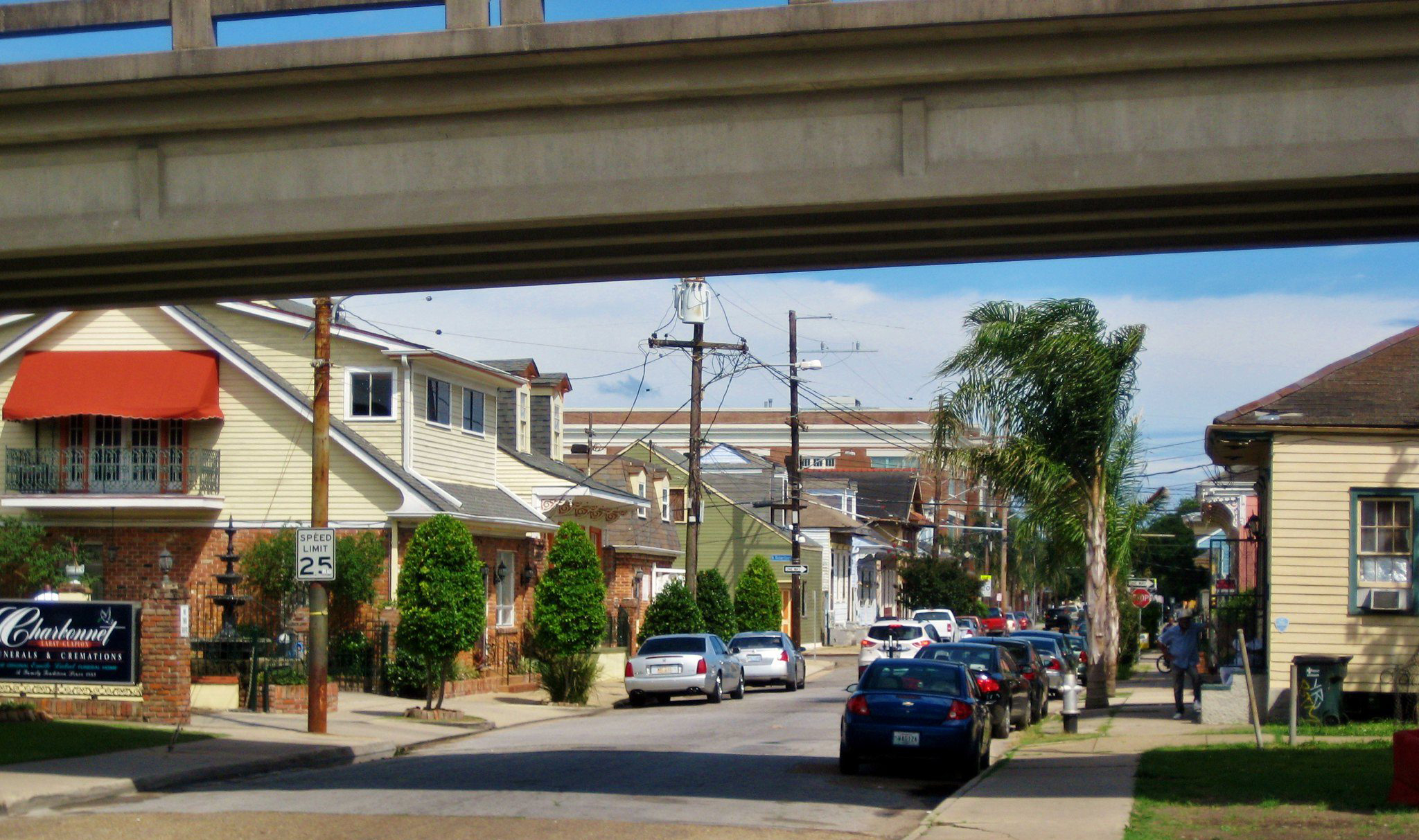“Nobody walks in LA,” sang Missing Persons in 1982. The New Wave band could have been singing about most of America. How did it get this way? Why is it so hard to walk in most American cities, towns and suburbs? Why does the United States have the worst pedestrian safety record among peer countries? And what can we do about it?
We tell ourselves a story: Americans love driving. We wanted it this way.
The truth is a lot more interesting — and empowering.
One hundred years ago, everyone walked in Los Angeles. Some people drove too, but the rules favored the walkers. A dense and extensive network of street railways made walking practical for most people.
Drivers could make walking dangerous. But when a pedestrian was injured or killed, the predictable response at the time was to protect walkers. Speed limits were low. Street fixtures were installed slow motorists down. In many cities, people demanded mandatory mechanical speed governors. Drivers would have to install them, making speeding impossible.
Such demands alarmed people who wanted to sell cars and build roads. In 1922 the editor of Engineering News-Record, a road construction trade journal, called for “a radical revision in our conception of what a city street is for.” He wanted streets to be for drivers. It was a far-fetched idea.
That balance of power reversed 100 years ago.
On Saturday, Jan. 24, 1925, Los Angeles introduced a law that gave motorists priority in the city’s streets. It went into effect just after midnight. Disobedient pedestrians were suddenly "jaywalkers." It was not the first jaywalking law in the United States, and not even the first one in LA. But it’s the one that worked, as far as drivers were concerned. And it is the ancestor of such laws nationwide.
The first arrest – with a $5 fine – came at 2 a.m. The president of the Automobile Club of Southern California, however, considered the policeman’s shrill whistle, pointed finger, and barked command more persuasive than any fine, because in front of witnesses the experience was humiliating. “The ridicule of their fellow citizens,” E.B. Lefferts contended, “is far more effective than any other means which might be adopted.”
The L.A. traffic ordinance of 1925 is not just history. It’s the American status quo today. The 1925 law became a model for the country, copied and imitated throughout the nation.
It was not the product of car culture, which was a nascent force. The public did not ask for it, and no referendum was held about it. Rather, it was the pet project of LA’s most successful car salesman: Paul G. Hoffman, the owner of America’s biggest Studebaker dealership. He hired a graduate student, Miller McClintock, to write it. And we don’t have to guess about Hoffman’s intentions, because he stated them himself. He commissioned the ordinance to sell more cars.
To get City Council to support it, Hoffman first got the Los Angeles Traffic Commission to approve it. As the commission’s chairman, Hoffman had sway. It sounds like a government agency, but the commission was really a private club of influential businessmen, most of them in the automotive businesses. They wanted to sell more, too.
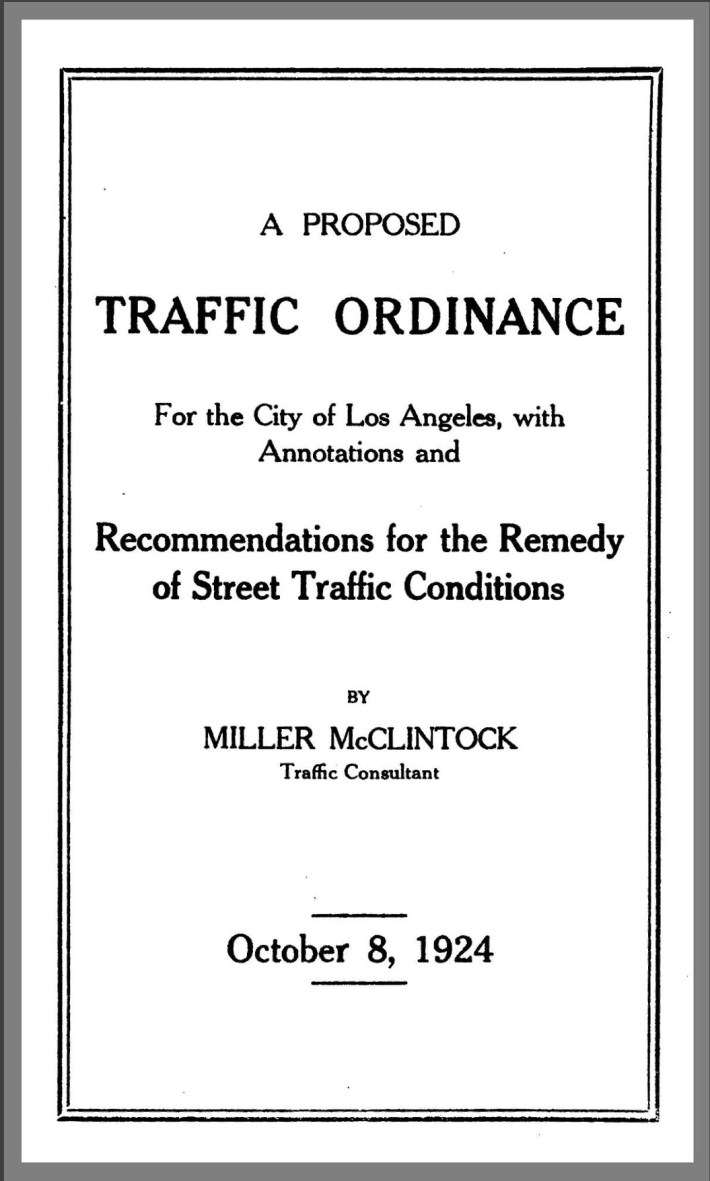
The national story was similar. The Los Angeles Traffic Ordinance of 1925 became the model for the country because organizations with a business interest in driving made it the model. Their success helped Americans reconceive streets as places just for cars, and engineers designed streets to implicitly tell drivers “This place is for you. You can drive fast here.” Marginalized pedestrians were forced to fend for themselves.
Today we live with the legacy of Paul Hoffman’s traffic ordinance. It helped make walking in the United States more difficult, more impractical and more dangerous than walking in other countries.
We are trying to correct course. In 2022, California’s new Right to Walk law decriminalized some walking practices that had been prohibited. But we’re a long way from making America walkable again. A major obstacle is the stories we tell ourselves about how we got here. We tell ourselves that Americans prefer to drive. We chose the status quo.
But if we take this centennial as a chance to review our history, we will find that — yes — Americans chose cars, but we did not choose unwalkable streets.
Americans love to walk. Los Angeles teaches us this, too. When Walt Disney designed Disneyland in 1955, he astutely made its centerpiece a walkable street, with pedestrian priority everywhere: Main Street USA. Its success is a testament to Americans’ persistent longing for places where people can walk without fear. Americans who prefer to take their holidays abroad predictably choose walkable places in Mexico or Europe.
America has a walking culture. What we lack are walkable places. Our history can help us rediscover our suppressed culture of walking. This will help us pursue a more walkable future.
